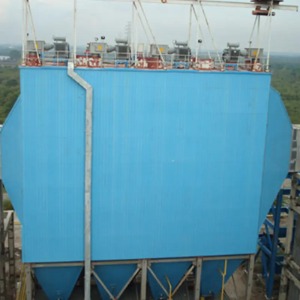As industries continue to evolve, the demand for sustainable practices has never been higher. Environmental concerns, including air pollution and energy consumption, are now central to industrial operations. Electrostatic precipitator filters (ESPs) and bag dust filters play a crucial role in addressing these concerns. Both of these filtration systems contribute to improving air quality, reducing emissions, and supporting industries in their efforts toward sustainability. But how do they contribute to reducing the environmental footprint, conserving energy, and promoting more efficient resource management?
Electrostatic Precipitator
The Environmental Impact of Dust and Particulate Matterhttps://www.jhkyhb.com/product/dust-collector/electrostatic-precipitator.html
The environmental impact of particulate matter (PM) is significant. Industries that produce large amounts of dust, smoke, or other pollutants—such as manufacturing, power generation, and chemical processing—are often at the forefront of discussions on air quality. Dust particles, especially fine particulate matter, are harmful to both human health and the environment. Without proper filtration, these particles can pollute the air, contaminate water supplies, and contribute to long-term environmental damage.
This is where electrostatic precipitator filters and bag dust filters become essential. Both systems are designed to capture and remove harmful particulate matter from industrial exhaust gases, significantly reducing the pollutants released into the atmosphere. By effectively collecting dust, soot, and other harmful particles, these filters help industries comply with stringent environmental regulations, reduce pollution, and protect the surrounding ecosystems.
Sustainability Efforts in Industries: Reducing Emissions with ESP and Bag Dust Filters
Sustainability efforts are becoming integral to how businesses operate. In the context of environmental sustainability, reducing emissions is a priority for industries. Electrostatic precipitator filters and bag dust filters play a pivotal role in this process by offering reliable methods for reducing harmful emissions at the source.
An electrostatic precipitator filter operates by using electrical charges to attract and trap dust particles from exhaust gases. This system is highly effective in capturing fine particles that are difficult to filter using conventional methods. By reducing emissions at the point of generation, ESP filters ensure that less dust and particulate matter are released into the environment.
On the other hand, bag dust filters, also known as fabric filters, work by trapping particles in the mesh fabric of the bags. These filters are particularly effective at collecting larger particles and are often used in combination with other filtration technologies for enhanced emission control. Bag dust filters help industries to meet the increasingly strict environmental standards for air quality.
Both filtration systems aid in reducing industrial emissions, which are a significant contributor to air pollution and climate change. By improving the efficiency of emission control processes, ESP and bag dust filters support industries in their goal to achieve more sustainable operations.
Contribution to Energy Conservation and Resource Management
While both electrostatic precipitator filters and bag dust filters excel in environmental performance, they also play a role in resource conservation, an often overlooked aspect of sustainability. Energy conservation is crucial in industrial settings where high energy consumption is a concern. Both filtration systems contribute to energy efficiency in different ways.
The electrostatic precipitator filter, although it requires an electrical charge to operate, is often more energy-efficient than traditional mechanical filtration methods. Its ability to capture fine particles with minimal energy input makes it a good choice for industries looking to lower their overall energy consumption while still maintaining high filtration efficiency.
Bag dust filters, while mechanically intensive, are also designed with efficiency in mind. Modern bag dust filter systems are equipped with advanced cleaning mechanisms, which reduce the frequency of manual maintenance and optimize the system's performance. By improving operational efficiency, these systems help conserve resources such as water, energy, and labor, further reducing the environmental impact.
In combination, electrostatic precipitator filters and bag dust filters enable industries to manage their environmental footprint more effectively while also optimizing resource usage. By improving filtration efficiency and reducing the need for excessive energy consumption, both systems help businesses maintain sustainability goals.
In the drive for greater sustainability, both electrostatic precipitator filters and bag dust filters have become indispensable tools for industries striving to reduce emissions, improve air quality, and conserve resources. These systems not only support regulatory compliance but also contribute to long-term environmental goals by reducing pollution and optimizing energy use. As industries continue to grow and demand for sustainable practices intensifies, the importance of these filtration technologies cannot be overstated. By integrating effective filtration systems like electrostatic precipitators and bag dust filters, businesses can pave the way toward a cleaner, more sustainable future.









